We talk to the newly-created Berlin human tower group and the consolidated “Kangaroos” in Sydney on how it feels to live away from home.
As the saying goes, building human towers is the art of squaring a triangle to make it round. Perhaps because it is so unique, this Catalan tradition is thriving not only in Catalonia, but is also expanding in other parts of the world. The 20 or so human tower groups welcome their newest member, the Berlin human tower group.
The idea emerged spontaneously, when a couple of Catalans living in the German city were deep in a slightly melancholic discussion and decided to join this adventure. If human tower groups exist in other cities around the world, why not in Berlin?
Lídia Pedro, one of the two co-founders of the group, admits that “living away from home, you sometimes feel that you want to be closer, and human tower groups allow you to build a bridge between your new home and the home you were born in, between new experiences and the older ones you don’t want to give up”.
Effort and perseverance to overcome the first obstacles
Starting a human tower group from scratch, and far from home, is not an easy task. As a starter, you need a fairly large human infrastructure. “We started off by spreading the word through on-line groups and friends until we were able to organize our first meeting, then the second, and then we started rehearsing, although we are still searching for people who’d like to join” Lídia explains, while adding that, to bring more people onboard “social media are a very effective tool, we are on Twitter, Instagram and Facebook”.
Although most of the group’s members are Catalan, there are also some Germans and they hope to add new people from other nationalities to “make the group as heterogeneous as possible” while also internationalize and “promote human towers and the Catalan culture abroad”.
This diversity of profiles however, can become another obstacle, because “only 25% of the group’s members have some previous experience, “which means almost starting from scratch. We have a highly experienced and very patient technical team. Without them it would be impossible to learn the technique. We’re only just starting, but we are progressing and with each
The castellers de la Vila de Gràcia have lent us helmets, and the group in London has given us dissemination materials.
Once the human infrastructure is under control, it is vital to look for a space where you can meet and practice, and this is not always easy. Lídia tells us that “now that the weather is good we practice outdoors, in a park with tall iron bars that we use as a ladder for support”. When the weather spoils the day “we can use a room that is leant to us for a small fee”, but she highlights they are looking for a more permanent space.
As for the materials, networking with other human tower groups has been key since “the Castellers de la Vila de Gràcia have leant us helmets and back supports, and the group in London has given us dissemination materials such as posters and flyers that we are translating into German”.
Slowly but surely
With the process of choosing a colour for our shirt and a logo for the group under way, the Berlin human tower group is not in a hurry. The goals they have set for the short term are “to find a space and involve new members so we are ready for our first performance next September 11”. In the longer term, they dream of building 6-level towers, although at present this seems a long way away”.
When hope and the initial effort bear its fruits
The stamina and constant work of the Berlin human tower group will, for sure, allow them to build those 6-level towers in the near future; this feat has already been achieved by the “Kangaroos” in Sydney. The Australian group was established in 2016 as an activity organized by the Catalan Association of New South Wales and currently is at the top of the rank of human tower groups abroad.
Discussing their key to success, Pau, one of the founding members, says that the magical recipe for success is “the enthusiasm of the people and having a broad social movement to progress”. “It doesn’t matter if you’re able to build the strongest trunk in the world, if you don’t have people to conform the base, you’ll never grow”.
Also, the council “organizes parties and activities to keep the group motivated and to have a meeting point in such a big city”, he also stresses that “we are like a family; when everything around you is so different, having people you can talk in Catalan with and having our little Catalonia away from home is very welcome”.
It doesn’t matter if you’re able to build the strongest trunk in the world, if you don’t have people to conform the base, you’ll never grow.
Despite all of this, the group isn’t exclusively made up of Catalans; they also have Bask people, some from Madrid, and a large representation of citizens from other parts of the world like France, Egypt, Japan, India, China, Germany, the Czech Republic and, of course, Australians.
The “Kangaroos” dress in yellow, to honour the country that hosts them. “All teams representing Australia dress in green and gold; as we didn’t want to use the same colour as one of the great groups, we decided that the colour that represented us the best is yellow, even if it a slightly controversial colour in these times”, Pau mentions.
The issues of building a base abroad
Besides the great experience, the “Kangaroos” often come up against many obstacles along the way. The first has to do with insurance; “Australia has no tower-building culture and whenever you offer to perform, they are always delighted but ask for insurance. We are covered by insurance from the Catalan Association, but it only covers their activities. If we want to perform in other spaces, we need our own insurance coverage, and this costs money”. And this money isn’t easy to come by, as “here there are no institutions that could help us financially, and the Catalan community is very small”.
Plus, the idiosyncrasy of the Catalan community living in Australia also makes it more difficult for the group to develop, because “it is quite normal for people to come here to study or take a gap year. So, most of the group’s members are people who will leave in June, and new people will arrive in September, meaning we have to start all over again. It’s the same every year”.
To end this situation, the group is looking to “create a group of Australians and long-term residents to conform the core of the group, so that the other members can come and go”.
Sharing experiences, the rule for survival
These structural difficulties force human tower groups to reinvent and explore other ways of surviving, and networking plays a vital role. “We have excellent relations with the “Koalas” in Melbourne, and we help each other; also with other international and Catalan groups thanks to which we have got materials and promo videos translated into English”.
Recognition and internationalization of the Catalan culture
Despite all the difficulties, building human towers far from home helps Catalans to keep their roots alive and give visibility to popular traditions they have grown up with, which are often seen as somewhat exotic on the other side of the globe.
Pau tells us that “locals look at us with curiosity; everyone stops to take pictures, ask us about what we are doing and even give it a try. It is very unlikely that they’ll stop seeing us as something exotic in a small corner of the city, but what is clear is that a growing number of Australians now know what human towers are and what they represent”.
The essence of human towers
The group in Sydney wishes well for the Berlin group and encourages them “to build a group that has regular performance and although building a 6-level tower is challenging, with the will to do it, everything is possible. If, at the end of the day, they are only able to build 5-level towers and smaller ones, it’s not a problem; the most important is to keep the spirits up and live”.
At the end of the day, with human towers, it’s not that important to build taller or lower towers, but rather to enjoy the journey and everything that goes with being part of the human tower family. Anyone can take part to build human towers, and there’s room for all at the base.


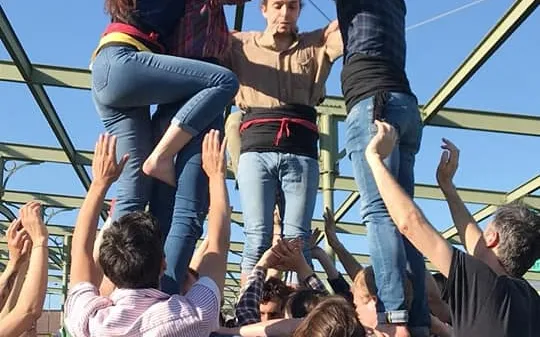

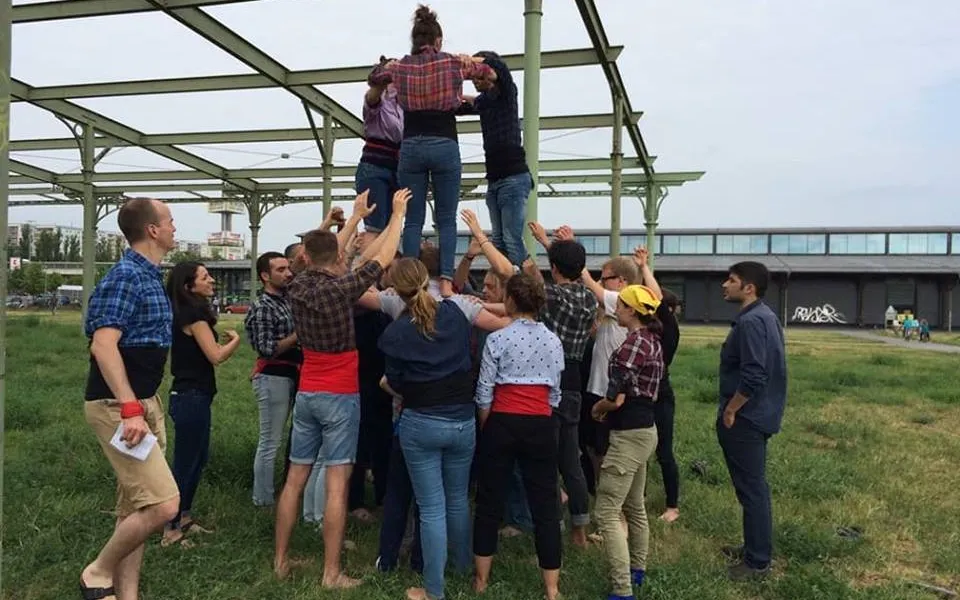
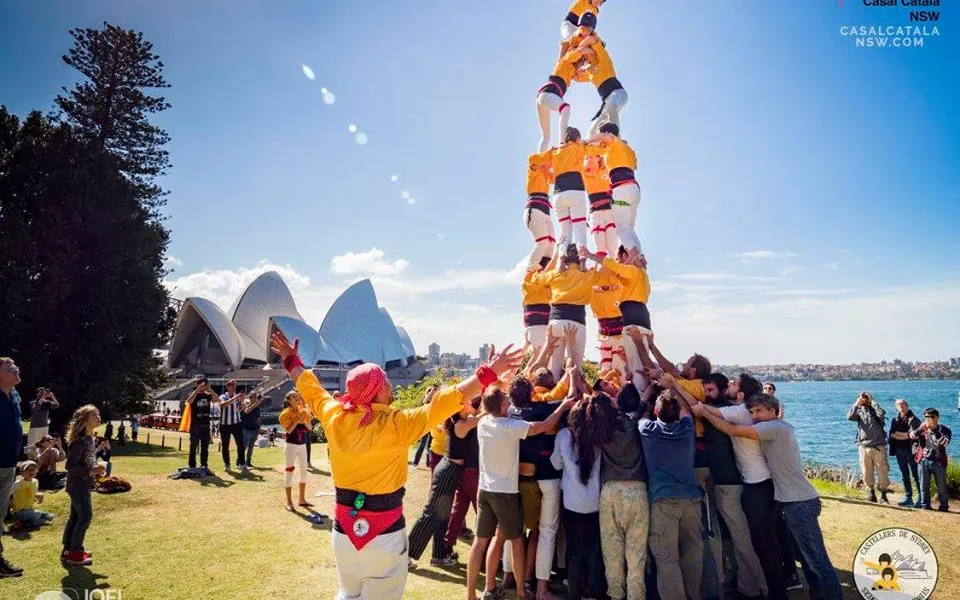
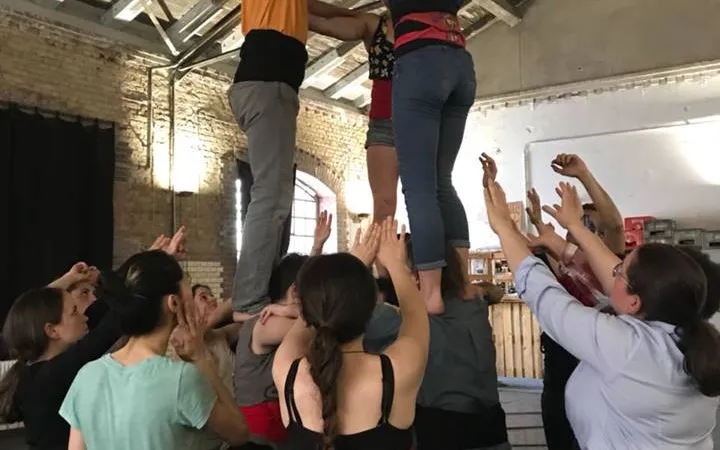


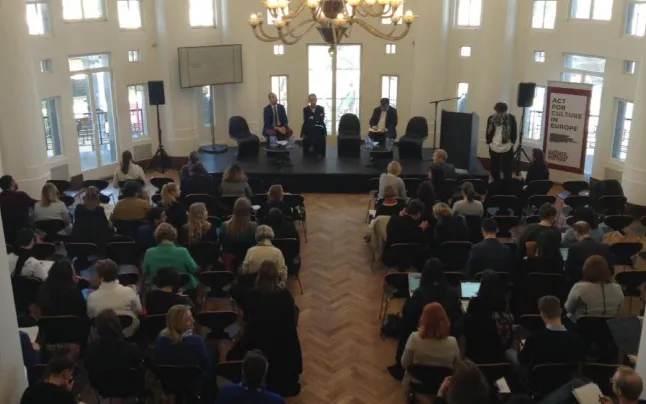

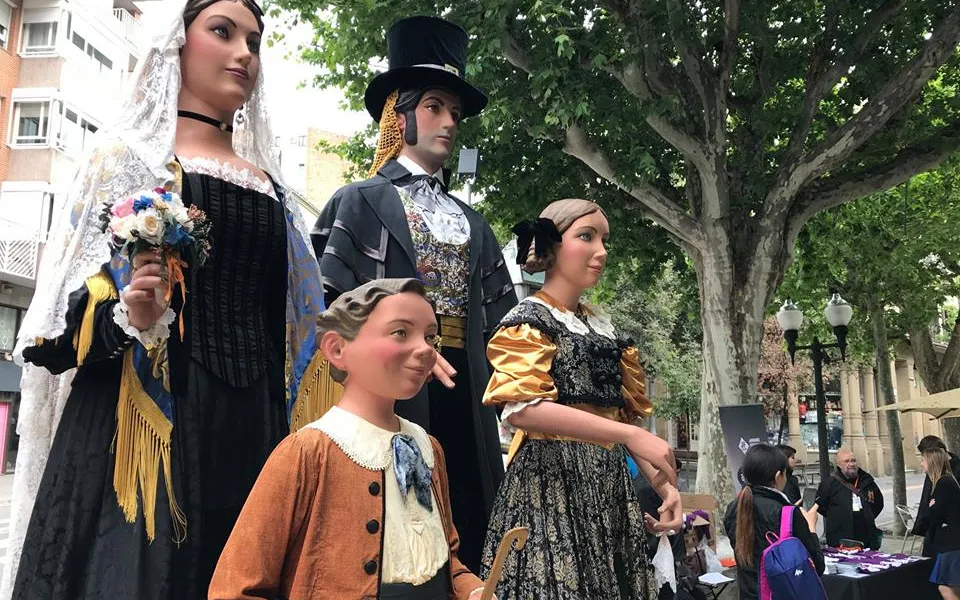
Add new comment